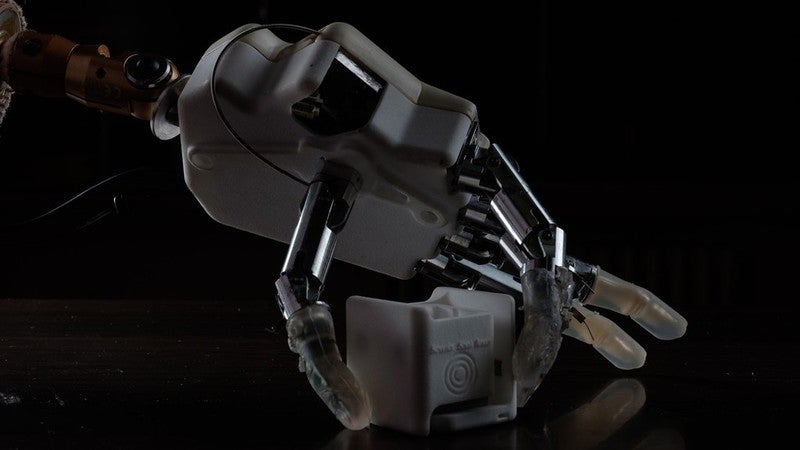
A team of Swiss and Italian researchers has developed a bionic hand to help amputees regain their proprioception, an instant and accurate sense of the position of limbs during and after movement.
The next-generation prosthetic is a result of a collaboration between the École polytechnique fédérale de Lausanne (EPFL) in Switzerland, and the Sant’Anna School of Advanced Studies and A. Gemelli University Polyclinic located in Italy.
It is designed to enable patients to reach out for an object and recognise its shape, position, consistency and size without having to look at it. The device offers a subtle close-to-natural sense of touch, said the team.
The researchers further noted that existing myoelectric prostheses facilitate voluntary motor control of artificial limb through residual muscle function in the forearm, but lack sensory feedback.
Tested in multiple patients, the new bionic hand demonstrated stimulation of nerves in the amputee’s stump. These nerves provide real-time sensory feedback to the user.
EPFL School of Engineering bioengineering professor Silvestro Micera said: “Our study shows that sensory substitution based on intraneural stimulation can deliver both position feedback and tactile feedback simultaneously and in real time.
How well do you really know your competitors?
Access the most comprehensive Company Profiles on the market, powered by GlobalData. Save hours of research. Gain competitive edge.

Thank you!
Your download email will arrive shortly
Not ready to buy yet? Download a free sample
We are confident about the unique quality of our Company Profiles. However, we want you to make the most beneficial decision for your business, so we offer a free sample that you can download by submitting the below form
By GlobalData“The brain has no problem combining this information, and patients can process both types in real time with excellent results.”
The use of the new bionic hand involves the insertion of electrodes directly into the amputee’s stump. These electrodes send electric pulses that enable intraneural stimulation and restoration of the flow of external information.
Patients will need training to learn translation of the electric pulses into proprioceptive and tactile sensations.
When assessed, two amputees were able to regain high proprioceptive acuity, with results comparable to those in healthy subjects.
EPFL researcher and study lead author Edoardo D’Anna said: “These results show that amputees can effectively process tactile and position information received simultaneously via intraneural stimulation.”
The study has been published in Science Robotics.
In the US, researchers at the University of Chicago are leading a project to introduce the sense of touch to the latest brain-controlled prosthetic arms.
Additional reporting by Charlotte Edwards.



